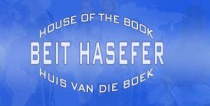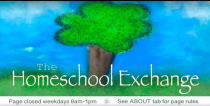|
By LJ van Oostrum.
The author holds a Master's degree in curriculum science. He has fifteen years experience in curriculum design. His reasearch and teaching also include the ethics of education as applied in human rights law and he holds a degree in history and geography.
These comments represent the views of the author, and do not necessarily represent those of the Pestalozzi Trust.
|
|
|
|
The issues in contention in the New National Curriculum can be summarized as follows:
|
|
|
Abusing the constitution
|
The curriculum claims to uphold the constitution. In reality, it abuses the constitution in order to impose totalitarian control on South African society. To analyse this very serious charge, we should consider first the ends and then the means:
|
|
|
Expected results
|
The most important indications that the curriculum will result in totalitarian control are: a) de-individuation of learners; b) homogenisation of religion and culture (including the imposition of revisionist history suborned to government policy) and, ultimately, c) demonisation of alternative viewpoints.
|
|
|
Devices employed
|
The principal devices used to justify the imposition of totalitarian control comprise a) an inversion of the legal meaning of the term “rights”; b) proceeding to derive a selective set of government approved values from the perverted meaning assigned to “rights” and c) compelling children to confess this set of values and to act them out.
|
|
|
Magnitude of the document
|
Having stated this, it is important to note that the destructured nature of the curriculum means that any particular issue, theme, or pedagogical aim is deliberately diffused widely across the entire 1400 pages of the document. In a summary such as this, therefore, it is possible to point out a few examples and occurrences. A comprehensive analysis, however, would probably require the labour of 150 professionals for at least one year. That is the amount of labour that was used to produce the document.
|
|
|
Please read the curriculum for yourself
|
Accordingly, we strongly recommend to every reader of this summary: Do not accept these conclusions at face value. It is of overriding importance that every parent, every teacher and every decision maker reads the original document for himself or herself. The issues referred to below do feature most strongly, however, in the learning areas of Social Sciences and Life Orientation as well as in the Overview and the Qualification Framework.
|
|
|
De-individuation
|
|
|
The curriculum promotes de-individuation by:
|
|
|
Early severance
|
a) Forcing early severance of the child’s immature individual identity and the child’s identification with the family at a time when this is developmentally inappropriate. The progression of the curriculum first focuses (in the reception year) the child’s attention on him or herself and only subsequently on the family. This may seem to be a minor issue in itself. In combination with the general emphasis on de-individuation, however, it is likely to foil the natural progression of individuation and increase the incidence of diffuse identity among children.
|
See the “focus”, values and outcomes for the Foundation Phase in Social Sciences and Life Orientation.
By the time the Senior Phase is reached in Life Orientation, peer dependence is presented as “very important, especially in disintegrating family structures”.
|
|
Excessive emphasis on mutability of the identity
|
b) At the same time, the curriculum requires teachers to stress the fact that identity is not immutable at an age when children still think concretely and are not capable of dealing with such abstract concepts. During this stage, the notion that identities are unstable is to be relentlessly drilled into children for all of the four pre-puberty years of the foundation phase. This practice is almost certain to cause wide spread incidence of diffuse identity, when children enter the natural phase for individuation at puberty. The curriculum neither warns nor takes precautions against such an outcome.
|
|
|
Shifting identities is fashionable
|
Recent writings by certain social commentators exploit the notion that cultural and religious identities can and do change. These authors have developed the shifting of identity into a desirable outcome, to be actively pursued in the interest of what they perceive to be positive social change.
|
See for example, comments on this tendency in Roodt at http://www.praag.org/ 09Sep2001.htm#swart alleen and in Grundlingh at http://www.suntimes.co.za/ education/features/ historystuff.asp
|
|
Manipulation of identity
|
Accordingly, this curriculum employs manipulation of individual, cultural and religious identities as an instrument of social engineering.
|
|
|
Loss of individuality
|
However, an unbalanced emphasis on shifting identity is likely to cause a loss of individuality manifesting in diffuse identity among children and young adults. Diffuse identity will exacerbate phenomena such as peer dependence, will devastate children’s assertiveness, and bring them under the control of the collective.
|
|
|
Control
|
Clearly, whoever controls the collective will, therefore, control the individual.
|
|
|
Homogenisation of religion and culture
|
|
De-individuation promotes cultural assimilation
|
A deliberate programme of de-individuation would establish fertile conditions for obliterating cultural and religious diversity by suborning the individual to the might of the collective. And, indeed, the curriculum reveals such an aim.
|
|
|
Compulsory adoption of values from other cultures and belief systems
|
This curriculum claims to promote “tolerance” of diversity. It does not. In the case of cultural diversity, it explicitly requires that children who wish to qualify for the GETC at the end of Grade 9 must demonstrate that they have acquired values from other cultures and belief systems. This requirement is merely an explicit formulation of a theme of assimilation that runs through the entire document.
|
See Learning Outcome 2 for the Senior Phase of Life Orientation. “Sensitivity to diverse cultures and belief systems” is demonstrated when “Values from a variety of cultures will enrich their lives, contribute to their own emerging world views…”
|
|
This is NOT tolerance
|
If “tolerance” means (as the Concise Oxford Dictionary says it does) to endure phenomena which one does not agree with, or which one does not find congenial, then what is promoted here is not tolerance. What this curriculum does is to impose the annihilation of cultural difference by assimilation.
|
|
Cultural identification as a constitutional right
|
Manipulation of cultural identity is directly contrary to the values of the Constitution. Indeed, the Constitutional Court quotes with approval the statement that cultural decisions are so important to self-identification that they must be protected from interference by the state.
|
National Coalition for Gay and Lesbian Equality and another v Minister of Justice and others
Constitutional Court - CCT11/98 at N25:
"Culture, sexual orientation, gender and even sex are not necessarily immutable. Rather than extending protection only to immutable human features, it should be recognized that certain choices are so important to self-definition that these too should be protected."
|
|
|
The same theme of assimilation is established and maintained in the field of religious education. Children are not only required to learn useful and important information about other religions. Few would be able or willing to fault such an aim.
|
|
Compulsory adoption of religious values
|
In this curriculum, however, children are compelled to interpret their social and political environment from the perspective of other religions. In effect, therefore, children are compelled to adopt values from other religions on those occasions that they are required to perform these tasks. Given the highly destructured organisation of the curriculum, this manipulation of children’s religious perspectives pervades the entire curriculum.
|
|
|
Homogenisation of religion and culture will, as was shown with respect to individuation, enhance social control by controlling the values that result from the process of homogenisation.
|
|
|
Religious values selected by the state
|
For the religious values that will be taught will not be the values esteemed by each religion as seen by its adherents. The intention of the curriculum, as implied in the overview and repeated throughout, is that the “religious” values taught to children will be those values from each religion that have been selected by government, that have been sanitised and found to comply with the purported values of our secular constitution.
|
|
|
Secular values substituted for religious values
|
As we argue further on, the aim of imposing a defined set of values in itself is not only questionable, but is contrary to the constitution, even when they claim to comprise the values of the constitution. However, in this instance, “the values of the constitution”, as one can glean from the curriculum, comprise a very specific ideological set of values, only some of which coincide with constitutional values.
|
|
|
State religion
|
In effect, this will impose on children a government religion that is likely to influence religious education provided by children in their own faith communities. Indeed, it is impossible to avoid the impression that the curriculum views the education department as a kind of “church” confessing its own creed and appointing its own priests (official documents of the department claim in so many words that teachers have “a pastoral role” in the school and in society).
|
|
|
Demonisation and victimhood
|
|
|
The thread of demonisation runs deep and swift through the curriculum.
|
|
|
Demonisation of legitimate constitutional rights
|
Some “demons” are labelled by name – colonialism, Nazism, slavery, racism, “apartheid”, sexism, capitalism, industrialism and so on and so forth – all of which resolutely remain undefined or vaguely defined concepts. Other “demons” seem to be present only in the form of vague shadows – private property, private conscience and private enterprise. These concepts are hardly mentioned at all in the curriculum but they reflect clearly in the manner in which the curriculum refers to “exploitation” and similar phenomena.
|
See both the values for both History and Geography in the Learning Area “Social Sciences”.
In many respects, this curriculum is more notable for what it is silent about than for what it states.
|
|
|
Clearly, it is necessary that children study the world in all its aspects, and in particular those aspects that threaten democracy. However, this curriculum employs these concepts as labels to attach to every kind of behaviour or attitude that government does not approve of.
|
|
|
Demonisation and politicising education
|
The use of undefined labels in this curriculum form a perfect case study of the use of language to position one’s opponent to the opponent’s disadvantage (itself a stated objective of the curriculum). But the problem is: in many instances, some of the children themselves, the families, cultures and religions into which they were born, become “the opponent”, labelled as “demons” and vilified. A glaring example of this occurs where Afrikaner identity is identified by juxtapositioning with Nazism. In this particular instance, the notion of identity in general is demonised, and Afrikaner identity in particular.
|
The “purpose” of language includes the following:
Political – to assert or challenge power; to persuade others of a particular point of view; to position others; to develop and sustain identities.
See Chapter 4 of the Overview.
|
|
State induced conflict
|
These “demons” are employed in the curriculum to define the relationships between those who are consistently portrayed in the role of “perpetrators” and those who are consistently portrayed as victims. The former are almost named – European heritage, Christianity, male gender, minorities, “the North”, the “haves”. The latter are less coyly designated – “the South”, indigenous peoples, women, children, Africa, the “physical, social and political environment”, the “have-nots”.
|
See particularly the Learning Area “Social Sciences”, but also the way in which these issues are dispersed throughout the curriculum.
|
|
|
Maleness is almost universally associated with unjustified and socially destructive dominance. “Having” in the sense of possession is, not once where we could see, associated with enterprise, creativity or hard work. It is consistently associated with exploitation.
|
Note the following “values and approach” recommendation in History for the Senior Phase:
Highlight the devastating effects of war on people, the environment and resources - Who goes to war? How are they and their families affected? What do women and children do in times of war?
Wendy McElroy, columnist on the Feminism page of the Fox News web site has this to say about this kind of reverse sexism in education:
"There is mounting evidence that public education discriminates against boys. Last month, the novelist and feminist icon Doris Lessing used the Edinburgh Books Festival as a podium from which to decry the diminishment of boys in society.
Lessing declared, "I was in a class of nine-and 10-year-olds, girls and boys, and this young woman was telling these kids that the reason for wars was the innately violent nature of men. You could see the little girls, fat with complacency and conceit while the little boys sat there crumpled, apologizing for their existence..."
http:// www.foxnews.com/story/ 0,2933,33552,00.html
|
|
|
The overall result of this approach is to turn schools into training camps of hate. The kind of hate that turns an aircraft full of commuters into a bomb to destroy thousands of “the opponent”.
|
|
Inversion of the meaning of “rights”
|
|
The curriculum downplays free choice
|
The Manifesto on Values, Education and Democracy (“The Manifesto”) establishes that “freedom of choice” is only one of the aspects of human rights.
Indeed, the Manifesto relegates freedom of choice (and expression!) to a secondary status.
|
“…while the Constitution grants inalienable rights to freedom of expression and choice, true emancipation means freedom from the material straits of poverty…
|
|
Freedom of choice is the essence of all rights
|
This is false. Freedom to choose is the essence of every right. When freedom to choose is removed, what was a right becomes a duty. The right to free speech includes the right to remain silent. The right to believe includes the right not to believe. The right to own property includes the right not to own property. The right to life includes the right to choose between piped water and anti-retroviral drugs.
|
|
|
The essence of any fundamental right (including the socio-economic rights) is to protect the individual’s freedom to choose against coercion by the collective.
|
|
|
Replacing free choice with compulsion by the collective
|
By all but vilifying freedom of choice, however, the Manifesto and the curriculum manage to justify the perception that the rights of the people are served when the collective makes the choices for the individual. The collective, in turn, is developed from the class in which the child learns to become, eventually, the elected government. This false notion underlies almost every occurrence of “human rights” and “social justice” in the curriculum.
|
See this progression in the Learning Areas “Social Sciences” and “Life Orientation”.
|
|
|
In this manner, social responsibility (a desirable attitude in itself) is falsely presented as a burden purportedly placed on the individual by the constitution. Often, indeed, social responsibility is almost confined to a duty to “share” – where the collective makes the decisions on what and how to share.
|
|
|
Hijacking “the values of the Constitution”
|
|
Duplicity
|
In perfect Machiavellian manner, the minister clearly states in the Manifesto the principle that values cannot be legislated – only to proceed in the curriculum to do just that.
|
|
|
Replacing the constitution with "the values of the constitution"
|
The curriculum establishes the notion that “the values of the constitution” may be used to justify every manner of imposition on the rights of the child. These impositions range from unjustified intrusions in the child’s physical and psychological privacy, to intrusion on the child’s privacy of conscience, to compelling the child to render community service and to take part in state festivals.
|
See particularly the Learning Areas “Social Sciences” and “Life Orientation”. However, these issues pervade the entire curriculum to some extent.
|
|
"The values of the constitution" are, in fact, the values of Mr Asmal
|
In reality, the values promoted by the curriculum are highly selective, and apparently selected to promote totalitarian subjugation of the individual to the collective. One example of this occurs in the realm of gender. The curriculum consistently promotes the notion that “respect” for life style choices means that the life style choices of others must not be criticised and, in fact, must be accorded universal approval.
|
|
|
|
This, as the Constitutional Court has stated explicitly, is a false conception of “respect” and “tolerance”. In a verdict on the rights of individuals to follow gay and lesbian life styles, the Court articulates the general rule as follows:
|
National Coalition for Gay and Lesbian Equality and another v Minister of Justice and others
Constitutional Court - CCT11/98
|
|
|
The fact that the state may not impose orthodoxies of belief systems on the whole of society has two consequences.(167)The first is that gays and lesbians cannot be forced to conform to heterosexual norms; they can now break out of their invisibility and live as full and free citizens of South Africa. The second is that those persons who for reasons of religious or other belief disagree with or condemn homosexual conduct are free to hold and articulate such beliefs.
|
|
"The values of the constitution" are unconstitutional!
|
The curriculum consistently, and in numerous respects, promotes the first of these consequences while ignoring the second. In this way, it functions as a filter, reflecting only a part of the values of the constitution and not all of them.
|
|
|
|
The effect of this is that the curriculum does impose orthodoxies of belief systems on children in schools.
|
|
|
Imposition of compulsory beliefs
|
|
|
This curriculum does not merely promote the belief system that the minister of education pretends to have distilled from the constitution – it actually compels children to act and live according to the tenets of these beliefs.
|
|
|
Assessment as instrument of compulsion
|
The assessment system is designed not only to test whether children “know” the values that the minister thinks they should subscribe to. It goes far beyond that. Children must demonstrate, in a wide variety of tasks, in their day-to-day actions during and after school hours, in class and in their families, that their actions are guided by these values.
|
See the “Qualifications Framework”, as well as the assessment section for each Learning Area.
|
|
Privacy invaded
|
Nothing is private. The assessment system requires constant and relentless observation, recording and reporting of the child’s thoughts and actions, the child’s and the family’s possessions, activities, relationships and beliefs.
|
|
|
Subjugating the very will of the individual
|
This curriculum establishes, by means of the education system, Big Brother as the accepted norm in our society. “Big Brother” in the literal sense as in the TV show, but even more dangerously, in the sense intended in what has been called “the darkest nightmare of the literature on power…George Orwell’s [novel] 1984”. The same author continues to point out that the kind of education described by Orwell – and proposed in this curriculum – has at it heart the ultimate unconstitutional invasiveness:
|
Kors, A: “Thought Reform 101 – The Orwellian implications of today’s college orientation” Reason Magazine, March 2000
|
|
|
“We are not content with negative obedience… When finally you surrender to us, it must be of your own free will.”
|
|
|
|
This is what Professor Asmal’s curriculum aims at. Control over the inner soul of every child by using the executive power of the state to do what legislative power may not do – imposing values by compulsion.
|
|
































